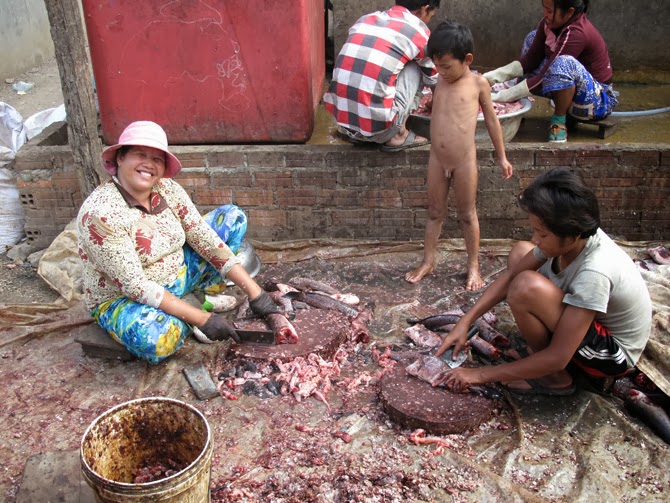 |
| Lao-Lao with Cobras |
Lao-Lao is a rice whisky produced in Laos. Along with Beer Lao, Lao-Lao is a staple for the people of Laos. Contrary to what the romanized vocalizations would make you believe, the name Lao-Lao is not the same word repeated twice, but actually, two different words pronounced with different tones - The first Lao means alcohol and is pronounced with a low-falling tone, while the second Lao means Laotian and is pronounced with a high-rising tone. Lao-Lao.
Lao-Lao is traditionally drunk neat. Various flavored Lao-Lao whiskys are made by such additives as snakes or scorpions. It’s women who usually distill Lao-Lao and sell it as a source of income, often being their major income. Lao-Lao rice whisky is a very raw drink but it’s widely sold throughout Laos, some with Cobras or Scorpians which is interesting.
 |
| Local men drinking Lao-Hai |
A less powerful version of Lao-Lao is called Lao-Hai and it’s especially popular with ethnic groups in Laos. It’s commonly drunk from large communal earthenware pots (hai) through long bamboo straws.
 |
| Weaver in Ban Pac Ou who made Tami's Silk Scarf |
Silk weaving, for daily use and for rituals, has been an integral part of life and culture in Laos for centuries. Most Lao village women learned the art of weaving and the traditional designs from their mothers when they are little girls
Silk worms eat Mulberry leaves. Natural silk is produced by silkworms that spin fine filaments into cocoons. Silk was first introduced to Laos when the Tai-Lao people migrated from their ancestral lands in Southern China into present day Laos. They brought with them the knowledge of silk cultivation, dyeing, and weaving on upright wooden looms.
Highly recommended!
If you’d like to check out more pages of the blog . . . Click here














































